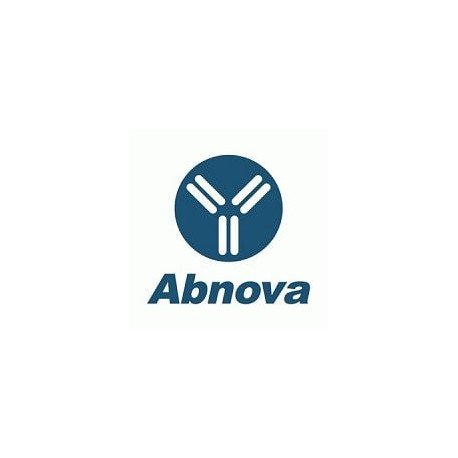Cart 0 Product Products (empty)
No products
To be determined Shipping
0,00 € Total
Prices are tax excluded
Product successfully added to your shopping cart
Quantity
Total
There are 0 items in your cart. There is 1 item in your cart.
Total products (tax excl.)
Total shipping (tax excl.) To be determined
Total (tax excl.)
Data sheet of PNKP polyclonal antibody
| Brand | Abnova |
| Product type | Primary antibodies |
| Reactivity | Chimpanzee,Dog,Human,Mouse,Rat |
| Host species | Rabbit |
| Applications | WB,ELISA |
More info about PNKP polyclonal antibody
| Brand: | Abnova |
| Reference: | PAB11245 |
| Product name: | PNKP polyclonal antibody |
| Product description: | Rabbit polyclonal antibody raised against synthetic peptide of PNKP. |
| Gene id: | 11284 |
| Gene name: | PNKP |
| Gene alias: | PNK |
| Gene description: | polynucleotide kinase 3'-phosphatase |
| Immunogen: | A synthetic peptide corresponding to internal region of human PNKP. |
| Protein accession: | Q96T60;NP_009185 |
| Form: | Liquid |
| Recommend dilutions: | ELISA (1:3000-1:12000) Western Blot (1:300-1:1500) The optimal working dilution should be determined by the end user. |
| Storage buffer: | In 20 mM KH2PO4, 150 mM NaCl, pH 7.2 (0.01% sodium azide) |
| Storage instruction: | Store at 4°C. For long term storage store at -20°C. Aliquot to avoid repeated freezing and thawing. |
| Quality control testing: | Antibody Reactive Against Synthetic Peptide. |
| Note: | This product contains sodium azide: a POISONOUS AND HAZARDOUS SUBSTANCE which should be handled by trained staff only. |
| Product type: | Primary antibodies |
| Host species: | Rabbit |
| Antigen species / target species: | Human |
| Reactivity: | Chimpanzee,Dog,Human,Mouse,Rat |
| Application image: |  |
| Application image note: | Western blot using PNKP polyclonal antibody (Cat # PAB11245) shows detection of a 57 kDa band corresponding to : Lane 1, human PNKP in a Y190 yeast cell lysate. Lane 2, Y190 yeast cell lysate + human PNKP (Gal DNA BP). Lane 3, EM9 XH Chinese hamster ovary cell lysate. Lane 4, EM9 XH Chinese hamster ovary cell lysate + human PNK. Lane 5, a HeLa cell lysate. Approximately 10 ug of lysate was run on SDS-PAGE and reaction with a 1:1000 dilution of PNKP polyclonal antibody. |
| Applications: | WB,ELISA |
| Shipping condition: | Dry Ice |
| Publications: | Molecular characterization of a human DNA kinase.Karimi-Busheri F, Daly G, Robins P, Canas B, Pappin DJ, Sgouros J, Miller GG, Fakhrai H, Davis EM, Le Beau MM, Weinfeld M. J Biol Chem. 1999 Aug 20;274(34):24187-94. |


